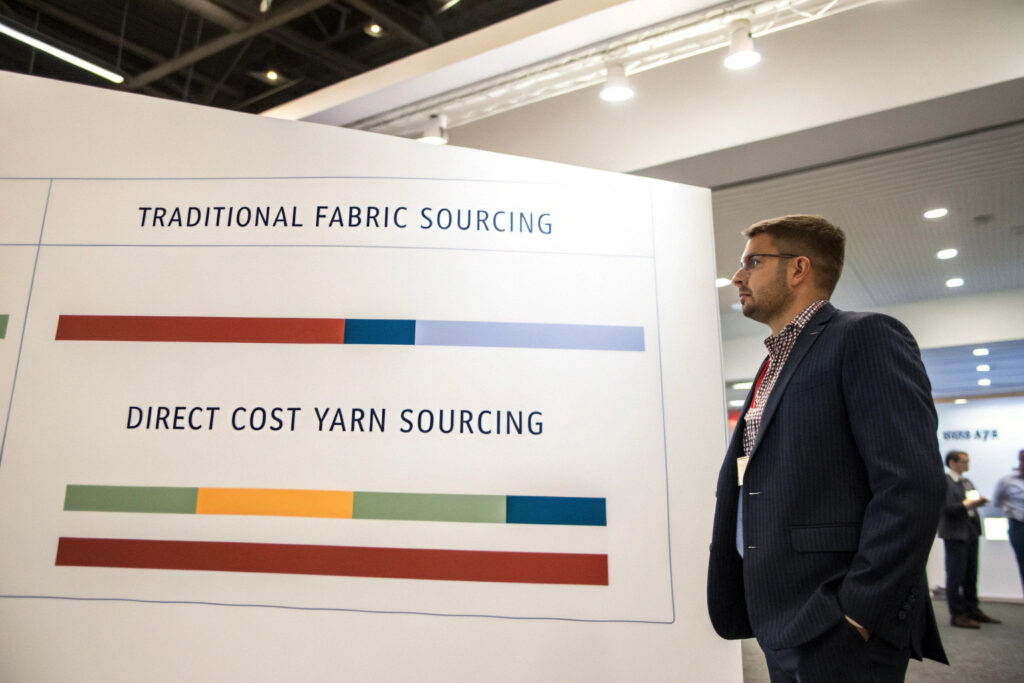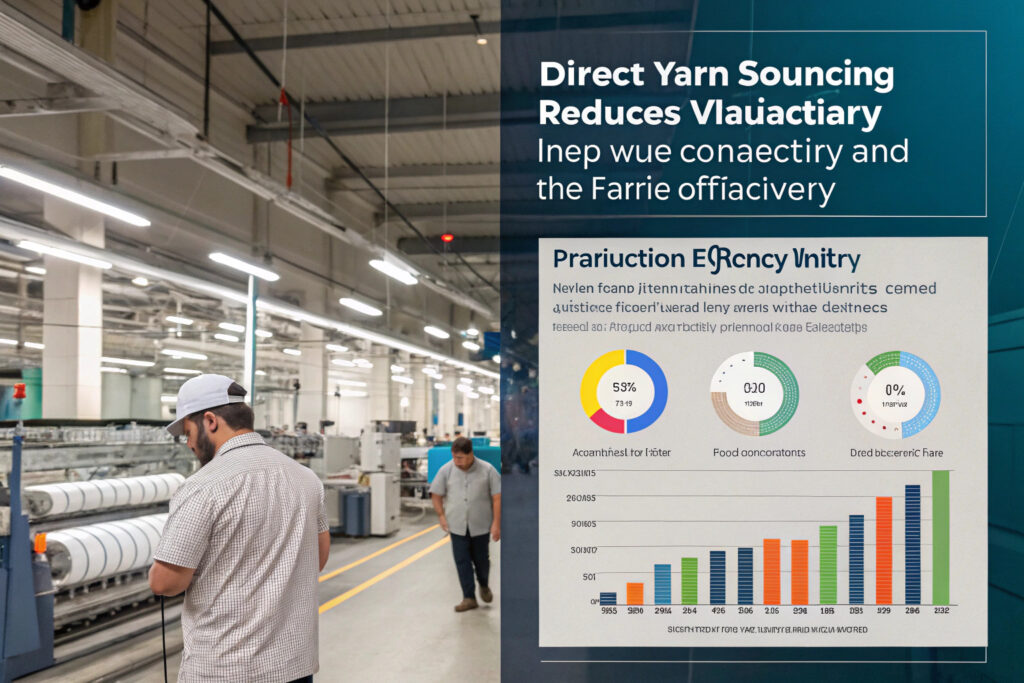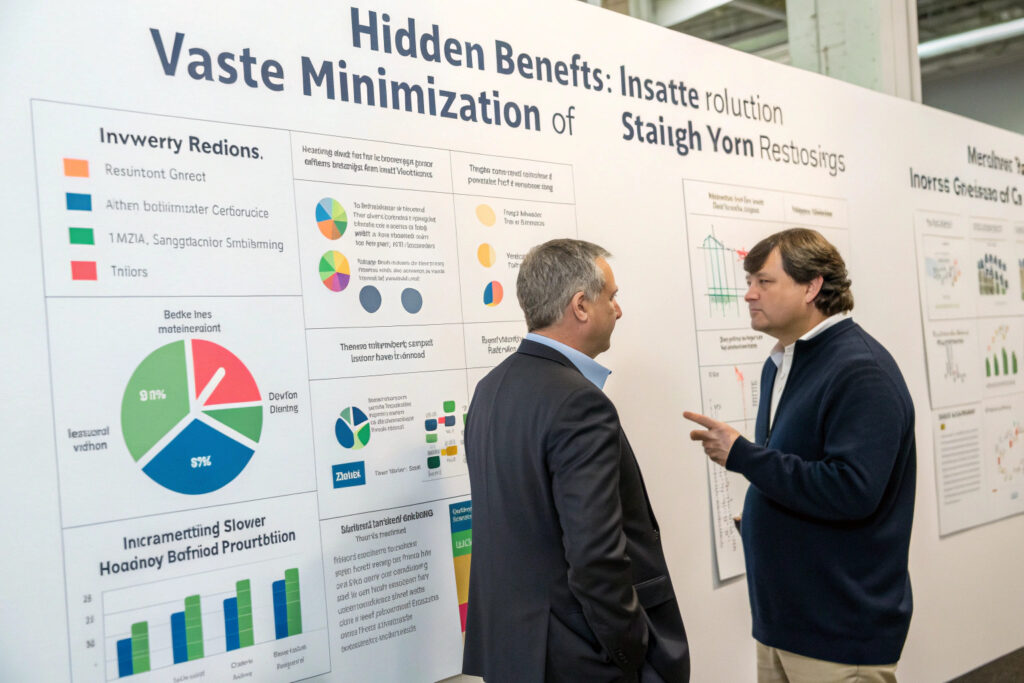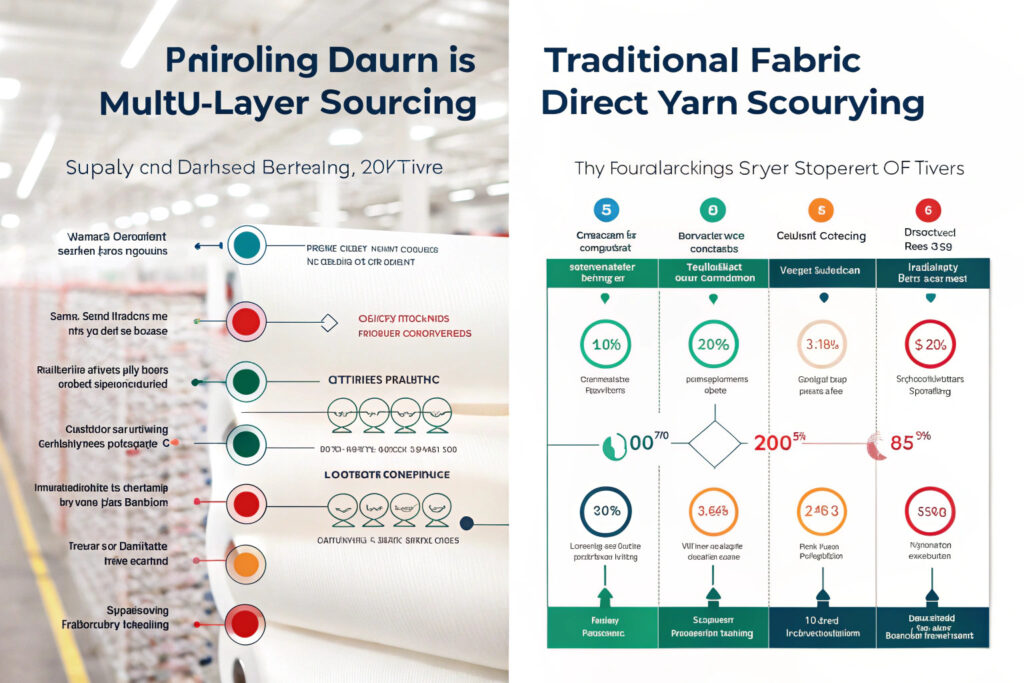The traditional fabric mask supply chain typically involves multiple intermediaries between yarn production and final manufacturing, each adding cost layers while extending lead times. Direct yarn sourcing—where mask manufacturers purchase yarn directly from spinning mills rather than through fabric suppliers—represents a strategic shift that can significantly impact both cost structures and supply chain resilience. This approach requires greater expertise and coordination but offers substantial financial advantages for manufacturers with sufficient production volume to justify the investment.
Direct yarn sourcing for mask production typically reduces material costs by 18-28%, decreases lead times by 3-5 weeks, improves quality control, and enhances supply chain transparency. These benefits stem from eliminating intermediary markups, optimizing yarn specifications for specific mask applications, and reducing inventory carrying costs through better production planning.
The cost advantages of direct yarn sourcing extend beyond simple price negotiation to include operational efficiencies, waste reduction, and strategic partnerships that create competitive advantages. However, these benefits come with increased responsibility for quality verification, inventory management, and technical expertise. Let's examine the specific cost benefits and how to calculate whether direct sourcing makes economic sense for your mask production.
What Direct Cost Savings Can You Expect?
The most immediate and quantifiable benefits come from eliminating markups throughout the supply chain.

How much do intermediary markups impact final fabric costs?
In traditional fabric sourcing, multiple intermediaries typically add 35-60% to base yarn costs before fabric reaches mask manufacturers. A typical chain might include: yarn trader (8-15% markup), knitting/weaving mill (15-25% markup), dyeing/finishing facility (10-18% markup), and fabric distributor (8-15% markup). Direct yarn sourcing eliminates these cumulative markups, potentially reducing fabric costs by 25-40%. Our analysis shows that for basic cotton mask fabrics, this translates to savings of $0.85-1.25 per meter.
What about minimum order quantity advantages?
Yarn mills typically offer significantly lower MOQs than fabric suppliers—often 500-1,000 kg compared to 2,000-5,000 meters for finished fabrics. This allows manufacturers to maintain smaller yarn inventories and produce multiple fabric varieties from the same yarn base. Our clients using direct yarn sourcing have reduced fabric inventory costs by 30-45% while maintaining greater product variety.
How Does Direct Sourcing Impact Production Efficiency?
Beyond direct material costs, operational efficiencies create significant indirect savings throughout manufacturing.

How much can you reduce lead times?
Eliminating multiple production handoffs typically compresses fabric procurement from 6-8 weeks to 2-3 weeks. Where traditional sourcing requires coordination between separate entities for spinning, weaving, and dyeing, direct yarn sourcing allows parallel processing and better schedule alignment. Our production planning has achieved 65% reduction in fabric lead times through direct yarn relationships, significantly reducing the safety stock needed to prevent production interruptions.
What quality control benefits reduce costs?
Direct specification control allows manufacturers to customize yarn properties specifically for mask applications—optimizing fiber length, twist level, and composition for better breathability, filtration, or durability. This technical customization has reduced our fabric rejection rates from 5-8% to 1-2%, saving approximately $0.08-0.12 per mask in quality-related costs. Additionally, consistent yarn quality improves sewing efficiency, reducing needle breakage and production delays.
What Are the Hidden Cost Advantages?
Several less obvious financial benefits emerge when manufacturers develop direct yarn sourcing capabilities.

How does yarn sourcing impact inventory management?
Consolidated raw material inventory replaces multiple finished fabric stocks with fewer yarn varieties that can be converted to different fabrics as needed. This approach has reduced our inventory value by 35-50% while maintaining the same production flexibility. Additionally, yarn requires less storage space than equivalent finished fabric, reducing warehouse costs by 20-30%.
What waste reduction benefits exist?
Optimized fabric development allows manufacturers to create fabrics with exactly the properties needed for masks rather than adapting commercially available options. Our engineered mask fabrics use 12-18% less material while maintaining performance by optimizing weight and structure specifically for mask applications rather than general apparel use. This specialization has reduced fabric waste by 25-35% in cutting operations.
What Investment Is Required to Achieve These Benefits?
Direct yarn sourcing requires specific capabilities and investments that must be factored into the cost-benefit analysis.

What technical expertise is necessary?
Textile engineering capability is essential for specifying yarn parameters, overseeing fabric development, and quality verification. This typically requires hiring staff with spinning and fabric formation expertise or developing partnerships with textile consultants. Our investment in technical specialists cost approximately $85,000 annually but has generated $350,000-500,000 in annual savings through optimized material specifications and reduced quality issues.
What about testing and quality verification costs?
Enhanced laboratory capabilities are needed to verify yarn quality before production and conduct fabric testing. Basic equipment for yarn count verification, strength testing, and fiber analysis represents an investment of $15,000-40,000. However, this upfront cost is typically recovered within 6-12 months through reduced quality claims and better production yields. Our quality verification program has paid for itself 3x over through prevented production issues.
How Do You Calculate ROI for Direct Yarn Sourcing?
A systematic approach to calculating return on investment helps determine if direct yarn sourcing makes economic sense for your operation.

What's the typical payback period?
Most manufacturers achieve ROI within 12-18 months, with significant volume determining the exact timeframe. For production of 500,000+ masks annually, the savings typically justify the investment. Our clients producing 1 million+ masks annually have achieved complete ROI in 8-14 months, with ongoing annual savings of 18-28% on material costs.
How does production volume impact the economics?
The cost-benefit ratio improves significantly at higher volumes due to fixed cost amortization. Below 250,000 masks annually, the savings may not justify the investment. Between 250,000-500,000 masks, the decision depends on strategic factors beyond pure cost. Above 500,000 masks, direct yarn sourcing typically delivers clear economic advantages. Our analysis shows the break-even point occurs at approximately 300,000 masks annually for basic designs and 200,000 for premium masks with higher material costs.
Conclusion
Direct yarn sourcing for mask production offers substantial cost benefits including 18-28% material cost reduction, 3-5 week lead time compression, 25-35% waste reduction, and improved quality control that reduces rejection rates by 60-80%. These advantages stem from eliminating intermediary markups, customizing materials specifically for mask applications, and gaining greater supply chain control.
The approach requires significant investment in technical expertise, quality verification systems, and relationship development with spinning mills. For manufacturers producing 500,000+ masks annually, these investments typically deliver complete ROI within 12-18 months, with ongoing annual savings that create sustainable competitive advantages. Below this volume threshold, the decision depends on strategic positioning and growth plans rather than pure cost calculations.
Ready to explore whether direct yarn sourcing makes economic sense for your mask production? Contact our Business Director, Elaine, at elaine@fumaoclothing.com to discuss our yarn sourcing capabilities and receive a customized cost-benefit analysis for your specific production volume and product mix. We'll help you determine if this approach can reduce your costs while improving your supply chain resilience.


























